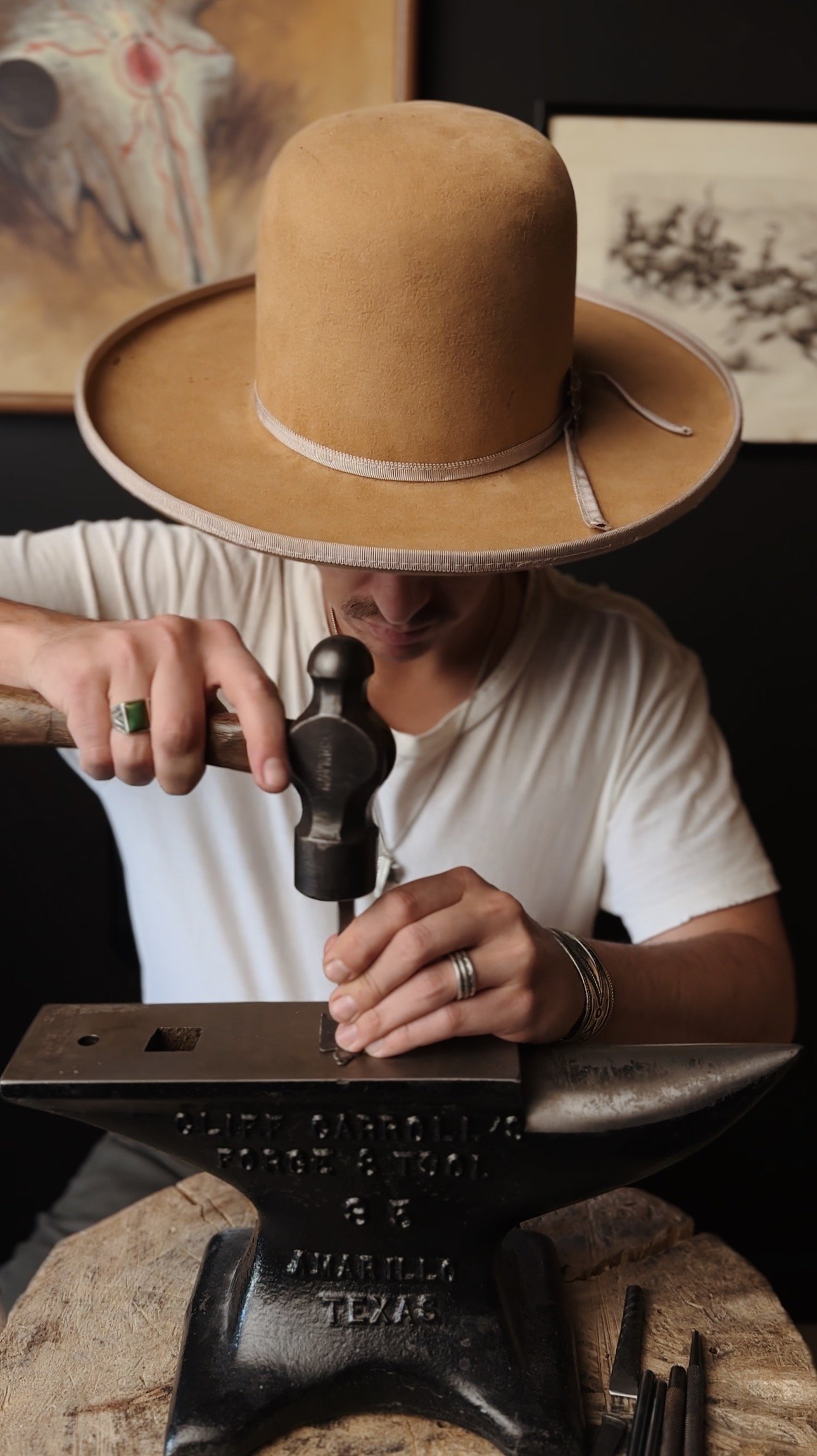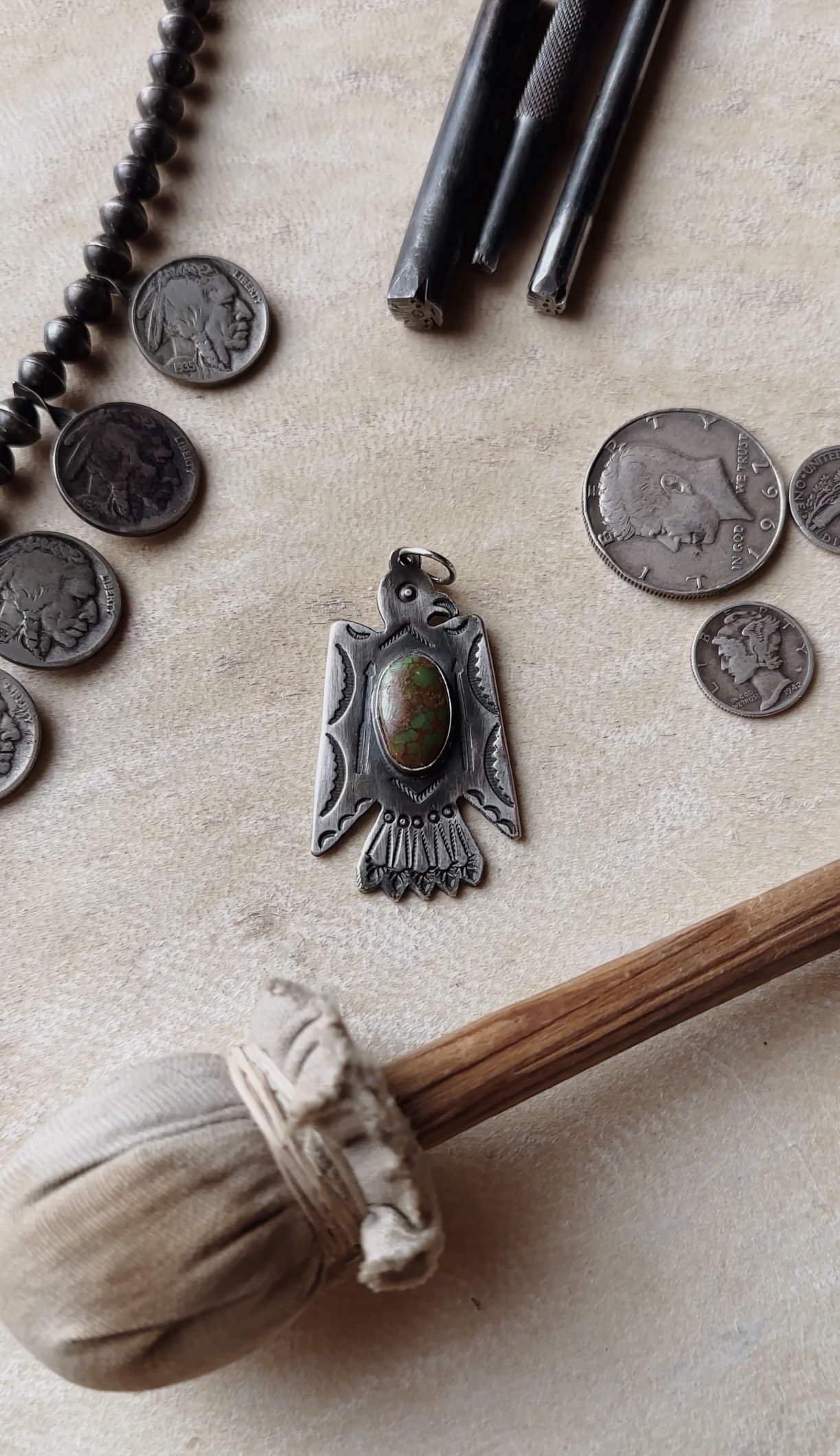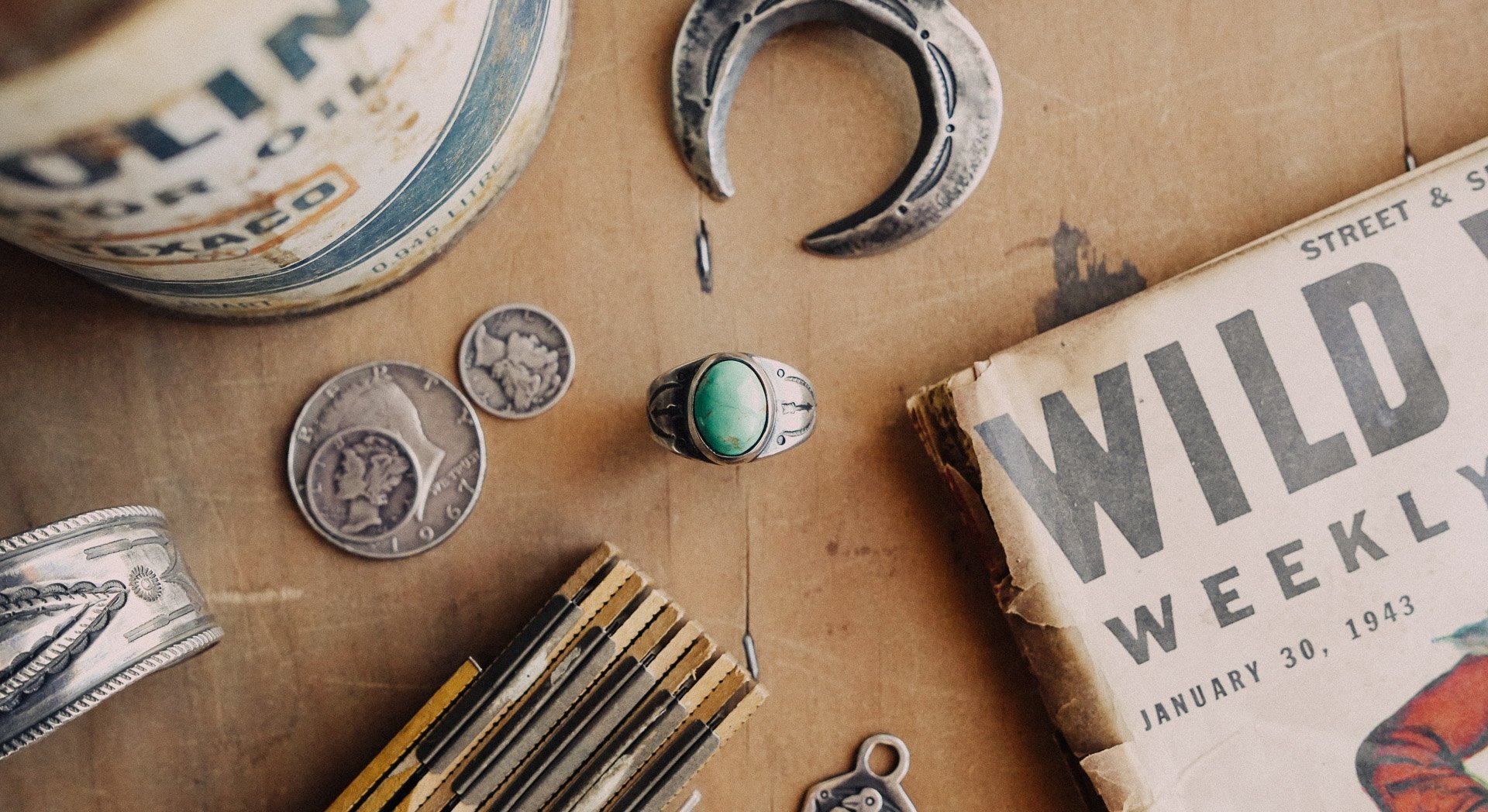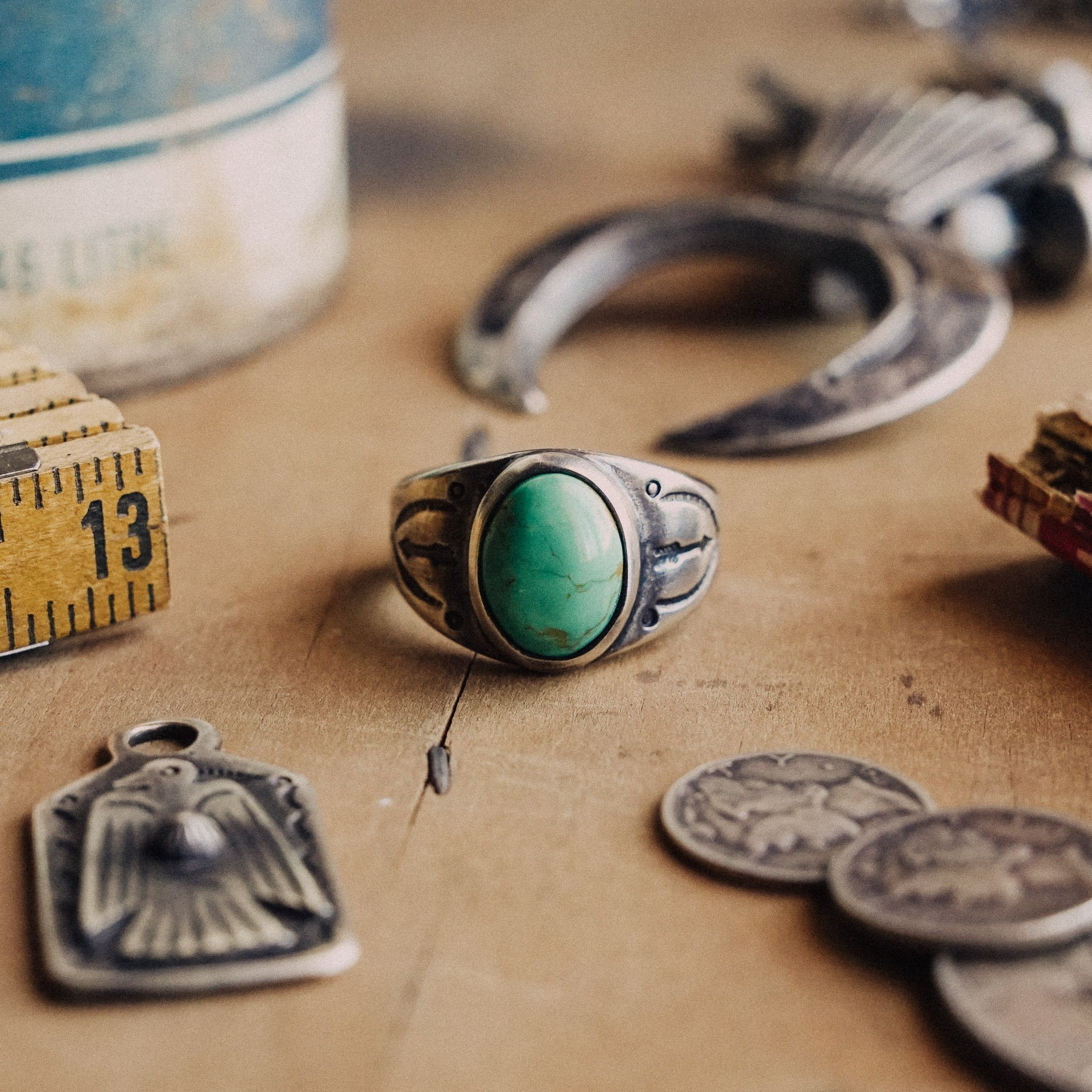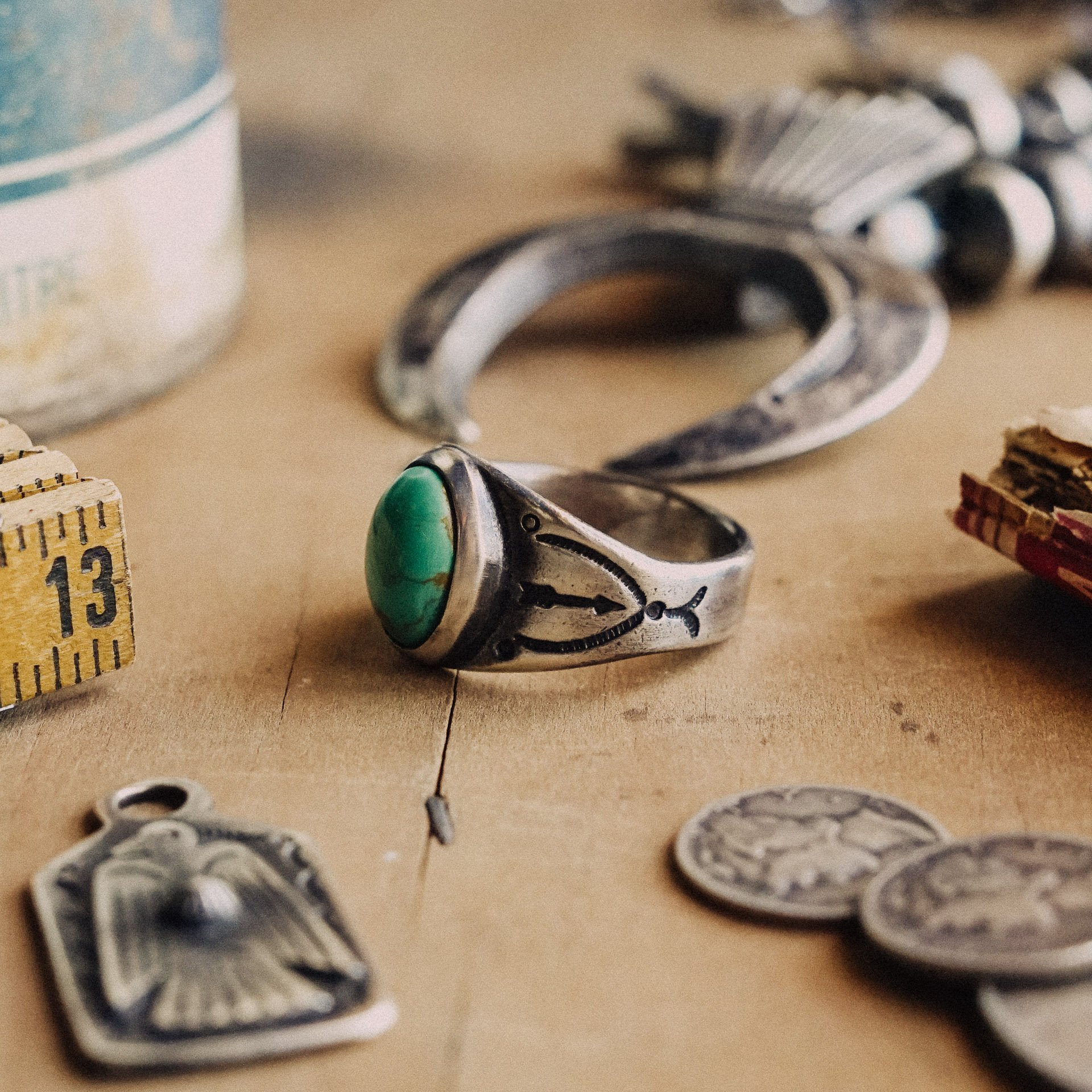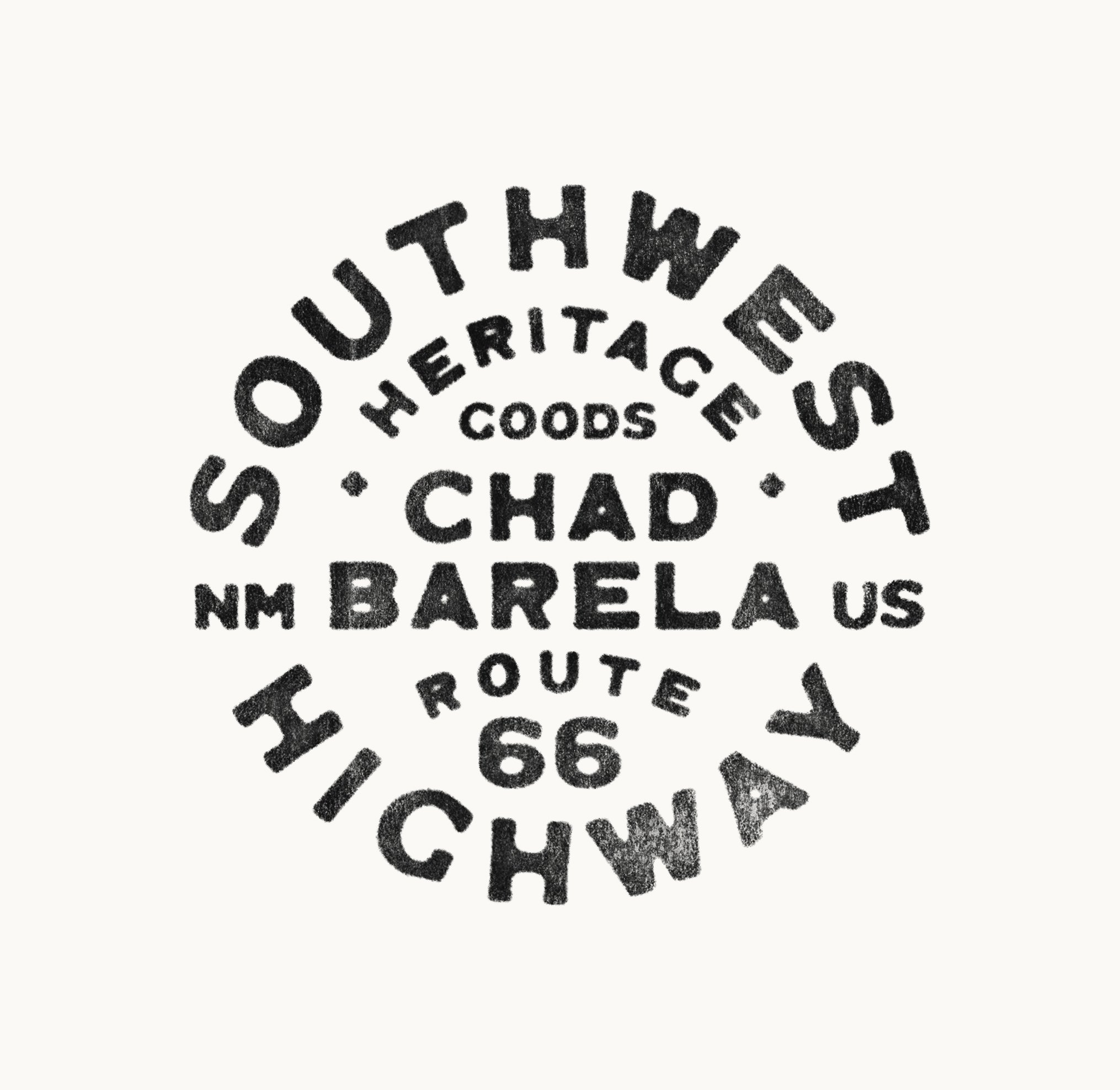CHAD’S BIRTHDAY GIVEAWAY
In keeping up with tradition, every year we host an event of some sort to celebrate together. This year its a giveaway. Any purchases of $25 and over get entered in for a chance to win this Royston Thunderbird pendant. During this time we’ve also made our Heritage goods available.
- Entries open until saturday at midnight -
(Introducing)
Royston “DUEL” Ring
A simple but sturdy ring set with a premium piece of Royston turquoise mined in Nevada. These first edition rings will be the only of their kind to be stamped with our “1st” hallmark, setting them apart from any future restocks.
The Origins of The Thunderbird in southwest silversmithing
While there is no doubt that a bird is commonly depicted in prehistoric Southwest artifacts and attributed to Pueblo and Navajo mythology, its use in Southwest jewelry is not of organic origin.

